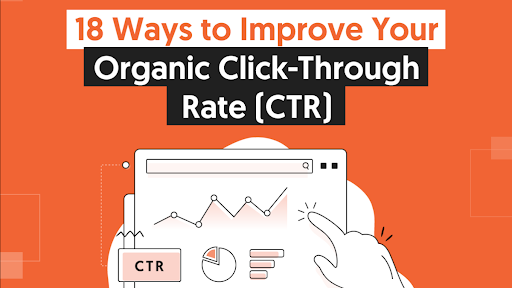Best Practices for CTR Control in Digital Advertising And Marketing
In the affordable landscape of electronic advertising, understanding and adjusting Click-Through Price (CTR) is essential for optimizing campaign efficiency. Ideal techniques, such as crafting engaging headings and utilizing clear calls-to-action, can considerably boost engagement.
Recognizing Click-Through Rate
Comprehending click-through rate (CTR) is vital for examining the effectiveness of digital advertising projects. CTR is a vital efficiency sign that determines the percentage of users that click on a certain web link out of the overall variety of individuals who check out a advertisement, e-mail, or website. It acts as an essential statistics for assessing the engagement degree of your audience and the general success of advertising campaigns.
A high CTR indicates that the web content reverberates with the target market, triggering them to do something about it. On the other hand, a reduced CTR may signify that the web content is relevant or not enticing, requiring a reassessment of the advertising technique. Factors influencing CTR include the quality of the content, the positioning of web links, and the overall individual experience on the system.

Crafting Engaging Headings
Crafting compelling headlines is important for recording audience interest and driving greater click-through rates (CTR) A well-structured headline acts as the initial point of contact between your content and prospective viewers, making it important to produce a strong preliminary effect. - CTR Manipulation Service
To begin, use clear and engaging language that aligns with your target market's requirements and passions. Integrating effective adjectives and action verbs can stimulate inquisitiveness and urge clicks. In addition, headings that present concerns or existing options to usual troubles can better lure readers, as they promise beneficial insights.
Employing numbers and listings in headlines can likewise boost charm. As an example, headings like "5 Tips for Boosting Your CTR" are not only particular however likewise suggest digestible and workable web content. Additionally, take into consideration the size of your headlines; concise headlines, ideally in between 50-70 personalities, are simpler to read and much more likely to be shared across numerous platforms.
Lastly, A/B screening various headline variations can give beneficial data on what reverberates most with your audience. By continually fine-tuning your method based upon efficiency metrics, you can create headlines that drive considerable interaction and improve general CTR.
Using Reliable Calls-to-Action
Taking advantage of the power of reliable calls-to-action (CTAs) is necessary for guiding customers toward wanted results and increasing click-through prices. A well-crafted CTA serves as an essential component in digital advertising, guiding audience habits and motivating involvement.
To make best use of effectiveness, CTAs should be clear, succinct, and action-oriented. Use strong, powerful verbs that motivate immediate activity, such as "Download and install," "Subscribe," or "Begin." Furthermore, the language must reverberate with the target market, reflecting their needs and desires.

Moreover, producing a sense of seriousness can substantially improve the efficiency of CTAs. Phrases like "Restricted Time Deal" or "Join Currently to Secure Your Area" can encourage users to act promptly.
A/B Testing Approaches
Applying A/B testing methods is essential for maximizing electronic marketing initiatives and boosting click-through prices. This method involves contrasting two versions of a digital property, such as an email, landing web page, or advertisement, to identify which variant carries out better in regards to user engagement. By methodically varying elements such as headlines, photos, colors, and call-to-action switches, marketing experts can collect empirical data to educate their decisions.
To properly conduct A/B testing, it is vital to establish clear goals and key efficiency signs (KPIs) beforehand. This ensures that the examinations are focused and results are measurable. In addition, a sufficiently huge sample dimension is essential to attain statistically significant results, preventing the pitfalls of arbitrary variant.
Timing is an additional crucial factor; examinations must be run long enough to record diverse customer actions but not so extensive that external impacts alter outcomes. Preserving a consistent customer experience across both versions helps isolate the anonymous impact of the evaluated component. By embracing these A/B screening approaches, online marketers can make informed decisions that not only increase click-through rates however likewise enhance general project efficiency.
Studying Performance Metrics
Analyzing performance metrics is important for recognizing the performance of electronic advertising and marketing techniques and making data-driven choices. By methodically examining key efficiency signs (KPIs) such as click-through prices (CTR), conversion prices, and client interaction levels, online marketers can identify areas for enhancement and optimize their projects appropriately.
To effectively assess performance metrics, it is vital to develop clear goals and standards that straighten with overall advertising objectives. CTR Manipulation. This permits for accurate comparisons and informed decision-making. Devices such as Google Analytics, heatmaps, and A/B screening systems can provide very useful understandings right into user actions and campaign performance

Verdict
Finally, effective adjustment of Click-Through Rate (CTR) in digital advertising requires the application of critical techniques. Crafting engaging headlines, utilizing persuasive calls-to-action, and conducting A/B testing are crucial elements. Continual evaluation of efficiency metrics better ensures placement with audience preferences and habits. By systematically fine-tuning these approaches, marketers can boost interaction and drive desired outcomes, eventually resulting in improved project effectiveness and higher conversion prices.
In the competitive landscape of digital advertising and marketing, understanding and controling Click-Through Price (CTR) is vital for optimizing project efficiency.Comprehending click-through price (CTR) is crucial for assessing the effectiveness of electronic advertising and marketing projects. CTR Manipulation.In the context of electronic advertising, optimizing CTR can lead to improved conversion rates and better return on financial investment. Inevitably, comprehending CTR is a foundational element of driving successful electronic advertising and marketing efforts and guaranteeing that campaigns achieve their wanted goals
In conclusion, reliable control of Click-Through Rate (CTR) in digital advertising and marketing requires the implementation of critical techniques.